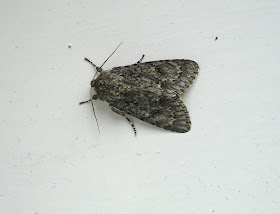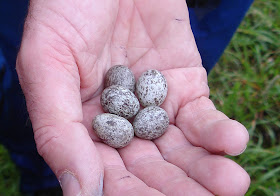
I just saw a flock of 15 Lapwing flying around the lake. A post breeding flock of Lapwing has been a feature at Beddington for a long time. In 1955 there were 600 birds reported in July/August, through the late 70s and 80s there were 300-400, through the 90s 150-300, the noughties 100 to 150 and this year 15-40 so far in the post breeding flock. How long before there is only one Lapwing left and then none? Hopefully it won't get that bad.
Like many local patch watchers, over 25 years I have watched my patch decline at an accelerating rate. Well over 50% of species at Beddington are in decline- associated with habitat changes on site and also regional changes such as climate, 'development' and agricultural changes.
Indeed some species are on the increase: Raptors, gulls, crows- all species associated with waste and carrion and also Ring-necked Parakeets- an invasive species which is doing extremely well. Then there is Little Egret- a species associated with a warming climate.
So as the larks, the Cuckoos, the Turtle Doves, the finches, the waders, the wagtails, the chats, the thrushes, the buntings and the sparrows decline into a tail spin- the aliens and scavengers explode in numbers. Things are getting pretty dark out there.
I think one main hope that most environmentalists have is that the decline will eventually bottom out and lead to recovery. Our societal system is universally recognised as unsustainable which means that a fundamental transition will certainly occur at some point. That transition could be slow and gradual or sudden and catastrophic- nature tends to be both.
In the meantime, concerned individuals can prepare by arranging themselves into independent self sustaining groups and to save as much as possible so that no matter what happens they are fit for any changes that will inevitably come and be in a position to spearhead the recovery. This process is already occurring everywhere and will presumably evolve further.

















































